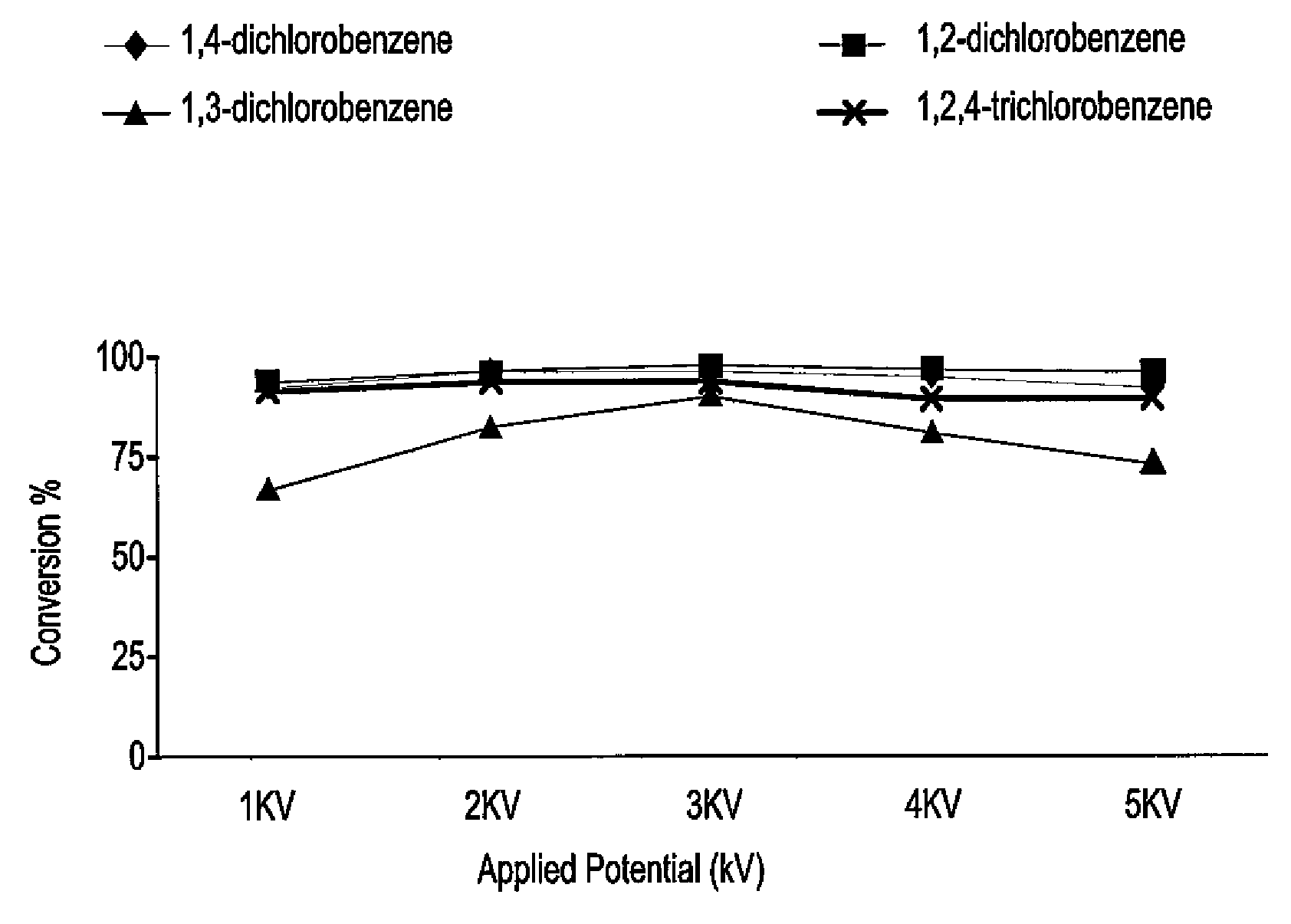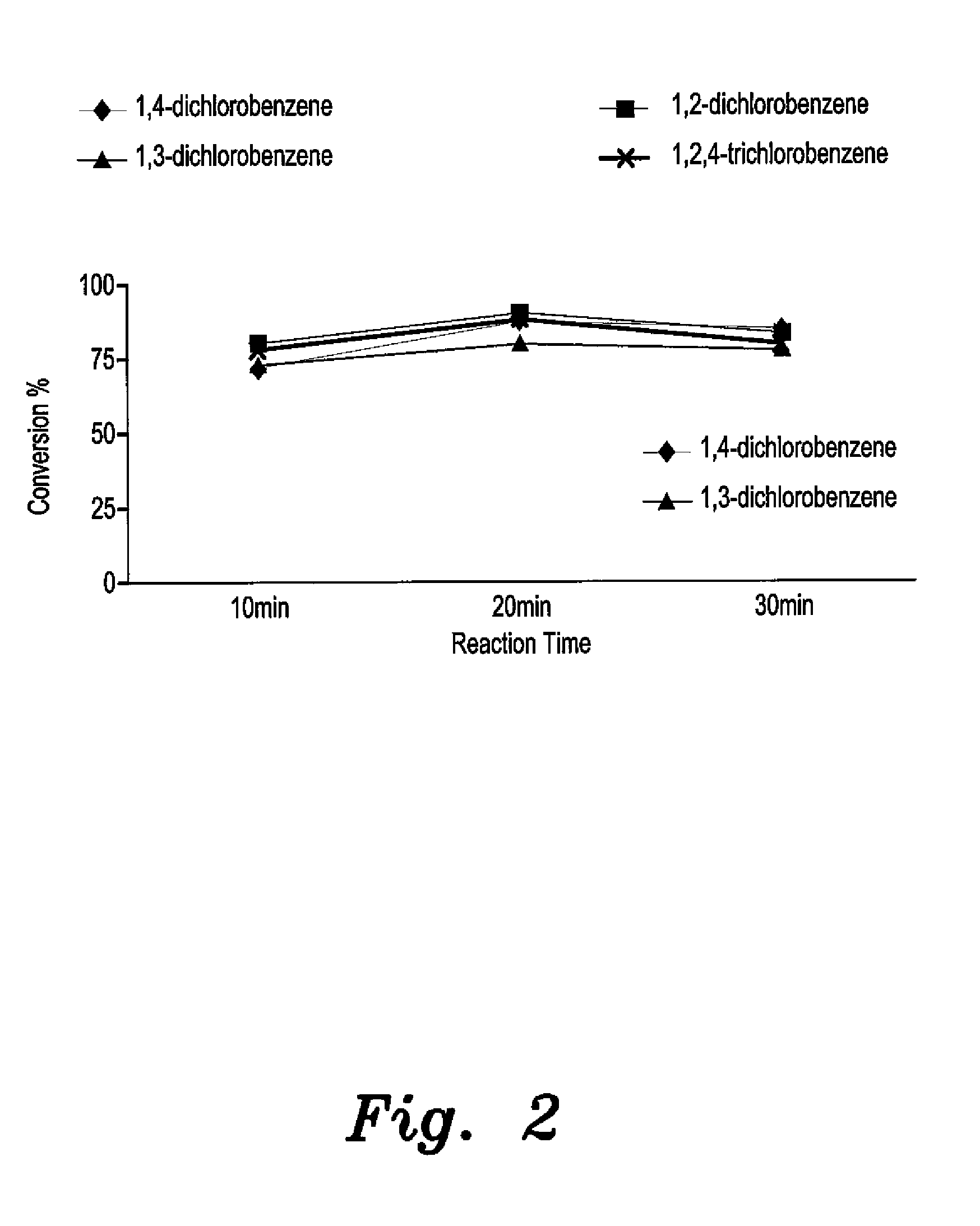Catalyst for electrochemical dechlorination of hydrocarbons
a hydrocarbon and electrochemical technology, applied in the direction of catalyst activation/preparation, metal/metal-oxide/metal-hydroxide catalyst, etc., can solve the problems of high materials cost, incomplete conversion, and formation of dioxins and the combustion of valuable hydrocarbons
- Summary
- Abstract
- Description
- Claims
- Application Information
AI Technical Summary
Benefits of technology
Problems solved by technology
Method used
Image
Examples
Embodiment Construction
[0016]The catalyst for electrochemical dechlorination of hydrocarbons, such as chlorobenzenes, is a d-block transition metal supported by rice husk ash (RHA), preferably rice husk ash-supported platinum or titanium. The catalyst is prepared from rice husk ash by the sol-gel method. The catalyst promotes the electrolysis of water, producing hydrogen, which displaces chlorine in halogenated hydrocarbons. In the experiments, 30 grams of clean rice husk was stirred in 750 mL of 1.0 M HNO3 at room temperature for a period of 24 hours. The cleaned rice husk was then washed with copious amounts of distilled water to reach a constant pH, and then dried in an oven at 100° C. for another 24 hours. The dried, cleaned rice husk was then burned in a muffle furnace at 600° C. for approximately six hours to obtain white rice husk ash.
[0017]Approximately 3.0 grams of rice husk ash was added to 350 mL of 1.0 mol / L NaOH in a plastic container and stirred for 24 hours at room temperature to produce a ...
PUM
| Property | Measurement | Unit |
|---|---|---|
| molar ratio | aaaaa | aaaaa |
| temperature | aaaaa | aaaaa |
| temperature | aaaaa | aaaaa |
Abstract
Description
Claims
Application Information
 Login to View More
Login to View More - R&D
- Intellectual Property
- Life Sciences
- Materials
- Tech Scout
- Unparalleled Data Quality
- Higher Quality Content
- 60% Fewer Hallucinations
Browse by: Latest US Patents, China's latest patents, Technical Efficacy Thesaurus, Application Domain, Technology Topic, Popular Technical Reports.
© 2025 PatSnap. All rights reserved.Legal|Privacy policy|Modern Slavery Act Transparency Statement|Sitemap|About US| Contact US: help@patsnap.com



